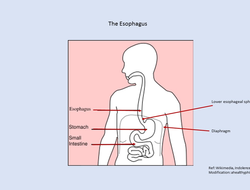GERD: Finding a solution that works for you
Published: October 26, 2018
Heartburn, “acid indigestion”, or gastroesophageal reflux (GER) is not uncommon.
Many healthy people occasionally experience these painful episodes which usually occur soon after eating a meal.
GER is the medical term given to the backflow of your stomach contents (acid chyme) into your esophagus accompanied by a burning sensation behind your sternum (breast bone).
People who experience GER two or more times a week are generally considered to have gastroesophageal disease (GERD).
Approximately 7% of the adult population experience GER and up to 35% of the North American population may experience GERD sometime during their lifetime.
In addition to a burning sensation behind your sternum, you may experience increased belching, spasms of your esophagus, irritation of your pharynx, hoarseness and in some cases asthmatic symptoms.
The contents of your stomach are highly acidic and can damage the mucosa (cells that make up the walls of your esophagus) causing your esophagus to become inflamed (esophagitis).
The amount of damage each bout of GER does to esophageal mucosa depends on the acidity of, and the length of time the refluxed matter is in contact with the mucosa.
As can be expected the more acidic your stomach contents, and the longer the duration and frequency of GER episodes the greater the damage to your esophageal mucosa.
Overtime, your esophageal mucosa is eroded and ulcers may form which can result in the formation of fibrous tissue which narrows the esophagus. This in turn may lead to dysphagia (inability to swallow).
The food that you consume at a meal passes from your mouth to your stomach via your esophagus, a long muscular tube.
The lower 4 centimetres of your esophagus are known as the lower esophageal sphincter: a muscle that acts like a valve which opens to let food into your stomach, and closes to prevent reflux of your stomach contents back into your esophagus.
While a defect in the lower esophageal sphincter (LES) muscle may be the cause of GER in a few instances, GER is thought to be associated with one or more of several factors:
- decreased pressure on the LES
- increased abdominal pressure
- delayed gastric emptying
- recurrent vomiting
- high acid production in your stomach.
Hiatus hernia, a condition that occurs when part of your stomach protrudes through the esophageal hiatus of your diaphragm, also increases you risk for GER.
GER is often associated with:
- consuming too much food or drink at a meal
- eating too quickly so that large unchewed lumps of food enter the stomach
- wearing tight clothing around your abdominal area
- lying down or bending over soon after consuming a large meal
- smoking
- vomiting
- coughing
- some medications
If you experience GER frequently it is important that you seek the advice of your medical practitioner since...link to the full article to learn more.
References
1.
Beyer, PL. (2000). Medical Nutrition therapy for upper gastrointestinal tract disorders. In K. Mann & S. Escott-Stump (Eds.) Krause's Food, Nutrition & Diet Therapy (2000) .
2.
Whitney, E. & Rady Rolfes, S. (2005). Understanding Nutrition. Belmont, CA: Thomson Wadsworth
3.
Gropper, S.S., Smith, J.L. & Groff, J.L. (2005). Advanced Nutrition and Human Metabolism (4thEd.). Belmont, CA: Thomson Wadsworth.
4.
Center for Science in the Public Interest May 2014, May 2013, March 2014, September 2007, October 2012, June 2014


